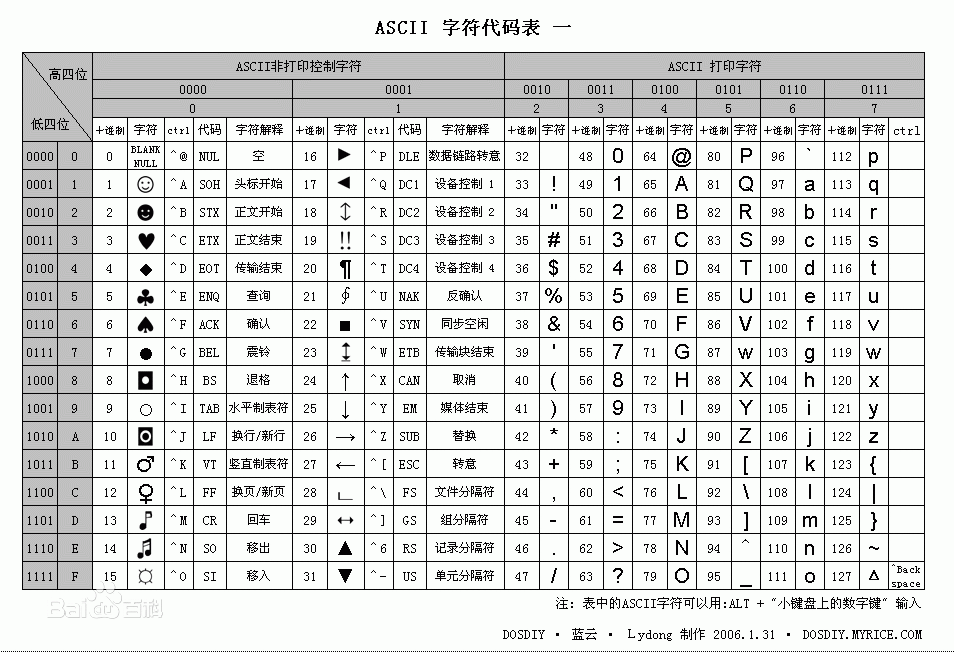一 python第一個程式 二 變數 2.1 變數名稱規則 變數名只能是 字母、數字或下劃線的任意組合 變數名的第一個字元不能是數字 以下關鍵字不能聲明為變數名 ['and', 'as', 'assert', 'break', 'class', 'continue', 'def', 'del', ' ...
一 python第一個程式
print('hello world!') # python3.x print 'hello world!' # python2.x
二 變數
2.1 變數名稱規則
- 變數名只能是 字母、數字或下劃線的任意組合
- 變數名的第一個字元不能是數字
- 以下關鍵字不能聲明為變數名
['and', 'as', 'assert', 'break', 'class', 'continue', 'def', 'del', 'elif', 'else', 'except', 'exec', 'finally', 'for', 'from', 'global', 'if', 'import', 'in', 'is', 'lambda', 'not', 'or', 'pass', 'print', 'raise', 'return', 'try', 'while', 'with', 'yield']
2.2 案例
_name = 'sam' # 正確 1name = 'yang' # 錯誤 name_it_1 = 'yuyu' # 正確
2.3 代碼案例
#!/usr/bin/env python3 # encoding: utf-8 # Author: Sam Gao # print("Hello world") name = "Sam Gao" # name -----> "Sam Gao" name2 = name # name -----> "Sam Gao" and name2 -----> "Sam Gao" print('My name is', name, name2) # 輸出: My name is Sam Gao Sam Gao name = 'pao che ge' # name -----> "pao che ge" and name2 -----> "Sam Gao" print(name, name2) # 輸出: pao che ge Sam Gao
三 字元編碼
3.1 ascii
ASCII(American Standard Code for Information Interchange,美國標準信息交換代碼)是基於拉丁字母的一套電腦編碼系統,主要用於顯示現代英語和其他西歐語言,其最多只能用 8 位來表示(一個位元組),即:2**8 = 256-1,所以,ASCII碼最多只能表示 255 個符號。註:python2.x 預設使用ascii編碼

3.2 中文字元集
GB2312
一共收錄了7445個字元,包括6763個漢字和682個其它符號。漢字區的內碼範圍高位元組從B0-F7,低位元組從A1-FE,占用的碼位是72*94=6768。其中有5個空位是D7FA-D7FE。
GBK
GB2312 支持的漢字太少。1995年的漢字擴展規範GBK1.0收錄了21886個符號,它分為漢字區和圖形符號區。漢字區包括21003個字元。
GB18030
2000年的 GB18030是取代GBK1.0的正式國家標準。該標準收錄了27484個漢字,同時還收錄了藏文、蒙文、維吾爾文等主要的少數民族文字。現在的PC平臺必須支持GB18030,對嵌入式產品暫不作要求。所以手機、MP3一般只支持GB2312。
從ASCII、GB2312、GBK 到GB18030,這些編碼方法是向下相容的,即同一個字元在這些方案中總是有相同的編碼,後面的標準支持更多的字元。在這些編碼中,英文和中文可以統一地處理。區分中文編碼的方法是高位元組的最高位不為0。
按照程式員的稱呼,GB2312、GBK到GB18030都屬於雙位元組字元集 (DBCS)。繁體中文,big5。
GB2312 GBK GB18030 占兩個位元組,並且能夠向下相容 GB18030 --> GBK --> GB2312 --> ASCILL
3.3 unicode
Unicode(統一碼、萬國碼、單一碼)是一種在電腦上使用的字元編碼。Unicode 是為瞭解決傳統的字元編碼方案的局限而產生的,它為每種語言中的每個字元設定了統一併且唯一的二進位編碼,規定雖有的字元和符號最少由 16 位來表示(2個位元組)
註:python3.x 預設使用unicode編碼
3.4 utf-8
UTF-8,是對Unicode編碼的壓縮和優化,他不再使用最少使用2個位元組,而是將所有的字元和符號進行分類:ascii碼中的內容用1個位元組保存、歐洲的字元用2個位元組保存,東亞的字元用3個位元組保存...
3.5 案例
#!/usr/bin/env python # encoding: utf-8 # 告訴解釋器用utf-8編碼 # Author: Sam Gao name = '高紹陽' # python2.x print name
#!/usr/bin/env python3 # Author: Sam Gao name = '高紹陽' # 預設用unicode編碼 print(name)
四 input 輸入
4.1 簡單輸入
#!/usr/bin/env python3 # encoding: utf-8 # Author: Sam Gao import getpass _username = 'sam' _password = '123456' username = input('username:') passwd = getpass.getpass('password:') # 在pycharm裡面用不了,只能在互動式或者 在linux里以 python3 passwd.py 執行,作用:不會顯示輸入內容 if _username == username and _password == passwd: print('welcome user {name} login'.format(name=username)) else: print('Invaild username or password')
4.2 案例 猜年齡游戲
#!/usr/bin/env python3 # encoding: utf-8 # Author: Sam Gao age_of_sam = 28 while True: guess_age = int(input('guess age:')) if age_of_sam == guess_age: print('yes, you got it') elif age_of_sam > guess_age: print('think big') else: print('think small')
五 while for迴圈 和 if判斷
5.1 while True:
# 參考 4.2 案例 猜年齡游戲 當不知道迴圈到哪裡的時候,就使用
5.2 案例
知識點:1. 有while......else.....的形式; 2. break和continus的用法;if 和 if.....elif...else 和 if...else
#!/usr/bin/env python3 # encoding: utf-8 # Author: Sam Gao age_of_sam = 28 count = 0 ''' 猜三次,如果猜正確,則退出 ''' # while True: # if count == 3: # break # # guess_age = int(input('guess age:')) # # if age_of_sam == guess_age: # print('yes, you got it') # break # # elif age_of_sam > guess_age: # print('think big') # else: # print('think small') # # count += 1 ##################################################### # while count < 3: # guess_age = int(input('guess age:')) # # if age_of_sam == guess_age: # print('yes, you got it') # break # # elif age_of_sam > guess_age: # print('think big') # else: # print('think small') # # count += 1 # if count == 3: # print('you guess too many times, fuck you !') ###################################################### # 或者 while count < 3: guess_age = int(input('guess age:')) if age_of_sam == guess_age: print('yes, you got it') break elif age_of_sam > guess_age: print('think big') else: print('think small') count += 1 else: print('you guess too many times, fuck you !')
5.3 使用for只玩3次
#!/usr/bin/env python3 # encoding: utf-8 # Author: Sam Gao age_of_sam = 28 for i in range(3): guess_age = int(input('guess age:')) if age_of_sam == guess_age: print('yes, you got it') break elif age_of_sam > guess_age: print('think big') else: print('think small') else: print('you guess too many times, fuck you !') for i in range(1, 12, 3): # 3代表步長 print('loop:', i)
5.4 任性玩5.2的游戲
#!/usr/bin/env python3 # encoding: utf-8 # Author: Sam Gao age_of_sam = 28 count = 0 while count < 3: # while True: guess_age = int(input('guess age:')) if age_of_sam == guess_age: print('yes, you got it') break # break 結束整個迴圈,不結束父迴圈 elif age_of_sam > guess_age: print('think big') else: print('think small') count += 1 if count == 3: while True: continue_play = input('Do you want to play:[yes/no]:') if continue_play == 'yes': count = 0 break elif continue_play == 'no': break else: print('pls input valid string') continue # continus 跳出當前迴圈 else: print('you guess too many times, fuck you !')
六 字元串格式化
案例
#!/usr/bin/env python3 # encoding: utf-8 # Author: Sam Gao # username = input('usrname:') # password = input('password:') # # print('username:', username) # print('password:', password) name = input('name:') # ===== python2 raw_input python3 eval(input) ===== python2 input age = int(input('age:')) # 預設輸出的是字元串 job = input('job:') salary = int(input('salary:')) print('name:', type(name), 'age', type(age)) info = ''' ----------------info of %s--------------- Name: %s Age: %d Job: %s Salary: %d ''' % (name, name, age, job, salary) # %s 字元串 %d 整數 %f 浮點數 info2 = ''' ----------------info of {_name}--------------- Name: {_name} Age: {_age} Job: {_job} Salary: {_salary} '''.format(_name=name, _age=age, _job=job, _salary=salary) info3 = ''' ----------------info of {0}--------------- Name: {0} Age: {1} Job: {2} Salary: {3} '''.format(name, age, job, salary) print(info) print(info2) print(info3)



